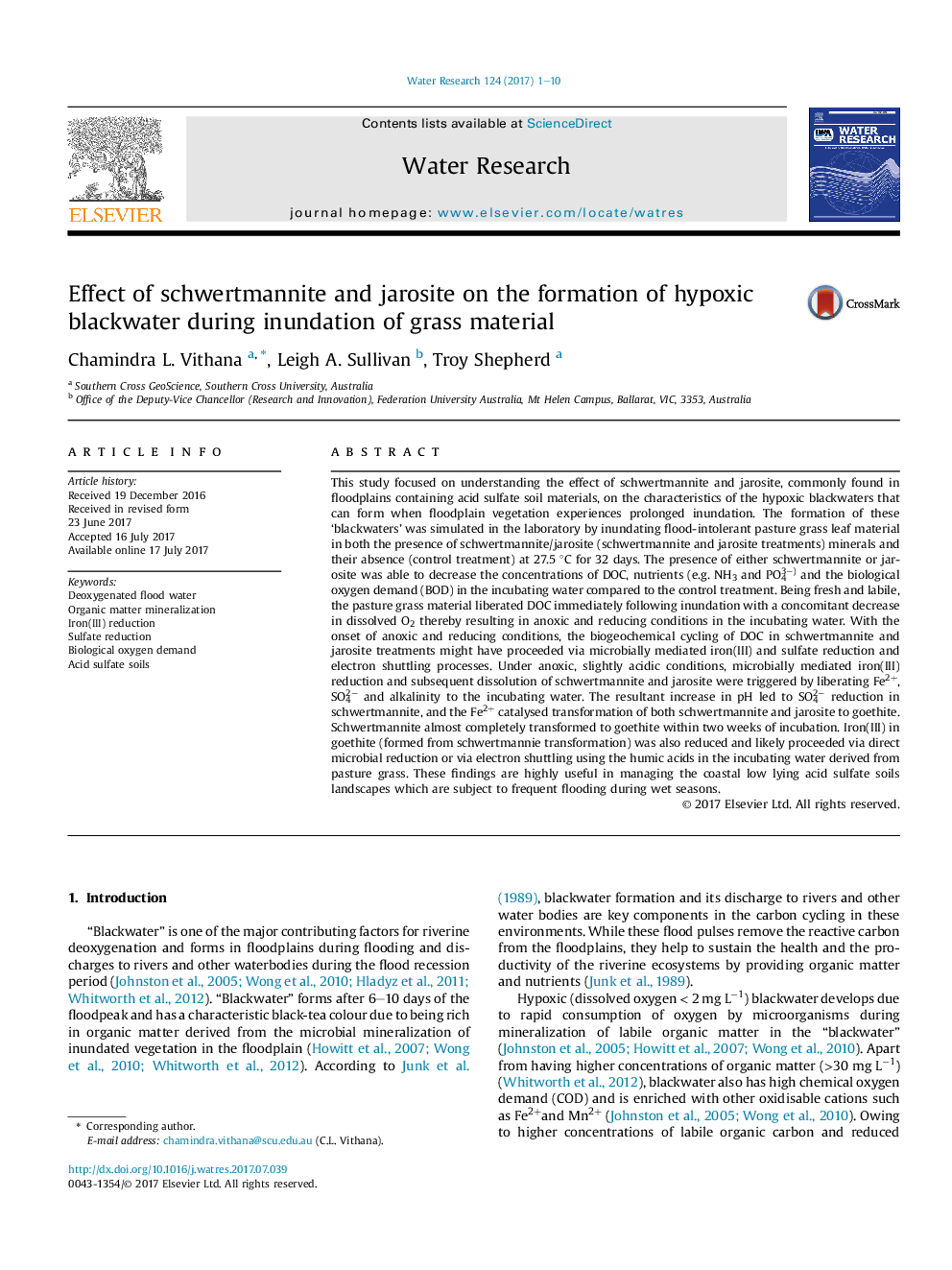| کد مقاله | کد نشریه | سال انتشار | مقاله انگلیسی | نسخه تمام متن |
|---|---|---|---|---|
| 5758701 | 1317500 | 2017 | 10 صفحه PDF | دانلود رایگان |
عنوان انگلیسی مقاله ISI
Effect of schwertmannite and jarosite on the formation of hypoxic blackwater during inundation of grass material
ترجمه فارسی عنوان
تاثیر شورترانینیت و یاروسیت بر شکلگیری سیاه آبخیز هیپوکسیک در هنگام پر شدن مواد چمنی
دانلود مقاله + سفارش ترجمه
دانلود مقاله ISI انگلیسی
رایگان برای ایرانیان
کلمات کلیدی
موضوعات مرتبط
مهندسی و علوم پایه
علوم زمین و سیارات
فرآیندهای سطح زمین
چکیده انگلیسی
This study focused on understanding the effect of schwertmannite and jarosite, commonly found in floodplains containing acid sulfate soil materials, on the characteristics of the hypoxic blackwaters that can form when floodplain vegetation experiences prolonged inundation. The formation of these 'blackwaters' was simulated in the laboratory by inundating flood-intolerant pasture grass leaf material in both the presence of schwertmannite/jarosite (schwertmannite and jarosite treatments) minerals and their absence (control treatment) at 27.5 °C for 32 days. The presence of either schwertmannite or jarosite was able to decrease the concentrations of DOC, nutrients (e.g. NH3 and PO43â) and the biological oxygen demand (BOD) in the incubating water compared to the control treatment. Being fresh and labile, the pasture grass material liberated DOC immediately following inundation with a concomitant decrease in dissolved O2 thereby resulting in anoxic and reducing conditions in the incubating water. With the onset of anoxic and reducing conditions, the biogeochemical cycling of DOC in schwertmannite and jarosite treatments might have proceeded via microbially mediated iron(III) and sulfate reduction and electron shuttling processes. Under anoxic, slightly acidic conditions, microbially mediated iron(III) reduction and subsequent dissolution of schwertmannite and jarosite were triggered by liberating Fe2+, SO42â and alkalinity to the incubating water. The resultant increase in pH led to SO42â reduction in schwertmannite, and the Fe2+ catalysed transformation of both schwertmannite and jarosite to goethite. Schwertmannite almost completely transformed to goethite within two weeks of incubation. Iron(III) in goethite (formed from schwertmannie transformation) was also reduced and likely proceeded via direct microbial reduction or via electron shuttling using the humic acids in the incubating water derived from pasture grass. These findings are highly useful in managing the coastal low lying acid sulfate soils landscapes which are subject to frequent flooding during wet seasons.
ناشر
Database: Elsevier - ScienceDirect (ساینس دایرکت)
Journal: Water Research - Volume 124, 1 November 2017, Pages 1-10
Journal: Water Research - Volume 124, 1 November 2017, Pages 1-10
نویسندگان
Chamindra L. Vithana, Leigh A. Sullivan, Troy Shepherd,
